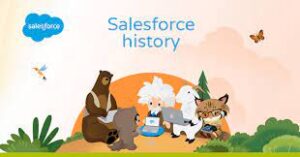The Foundation of Text Representation
The bag-of-words (BoW) model serves as a fundamental technique in natural language processing (NLP) that transforms textual data into numerical representations. This approach simplifies the complex task of teaching machines to analyze human language by focusing on word occurrence patterns while intentionally disregarding grammatical structure and word order.
Core Mechanism of Bag-of-Words
The Processing Pipeline
- Dictionary Establishment
- Defines the lexical scope for analysis
- Contains target vocabulary relevant to the application
- Customizable for domain-specific implementations (e.g., medical terminology for healthcare NLP)
- Tokenization Process
- Segments text into discrete units (tokens)
- Handles punctuation and word boundaries
- Example: “The quick brown fox” → [“The”, “quick”, “brown”, “fox”]
- Vocabulary Construction
- Creates a unique word index
- Eliminates duplicate entries
- Forms the basis for vector dimensions
- Frequency Calculation
- Counts occurrences of each vocabulary word
- Creates word frequency distributions
- Example: {“the”:2, “quick”:1, “brown”:1, “fox”:1} for “The quick brown fox. The fox.”
- Vector Representation
- Converts frequency counts to numerical vectors
- Enables mathematical operations on text
- Supports machine learning algorithm input requirements
Practical Applications
Text Classification Systems
- News categorization (politics, sports, technology)
- Document organization in enterprise content management
- Email filtering (priority inbox systems)
Sentiment Analysis Tools
- Customer feedback evaluation
- Social media monitoring
- Product review analysis
Specialized Detection Systems
- Spam identification in communications
- Plagiarism detection in academic works
- Language identification for multilingual platforms
Comparative Advantages
Implementation Benefits
- Computational Efficiency
- Low processing overhead
- Scalable to large document collections
- Suitable for real-time applications
- Interpretability
- Transparent feature representation
- Easily explainable to stakeholders
- Compliant with regulatory requirements
- Adaptability
- Customizable dictionaries
- Portable across domains
- Compatible with various ML algorithms
Technical Limitations
Semantic Challenges
- Context Blindness: Fails to capture word meaning variations (e.g., “bank” as financial institution vs. river edge)
- Sequence Insensitivity: Treats “dog bites man” and “man bites dog” identically
- Relationship Oversight: Ignores syntactic and semantic relationships between words
Practical Constraints
- Dimensionality Issues
- Vocabulary growth increases feature space exponentially
- Requires dimensionality reduction techniques
- Impacts model performance with sparse data
- Vocabulary Rigidity
- Difficult to incorporate new terms dynamically
- Struggles with domain-specific neologisms
- Requires complete reprocessing for dictionary updates
Enhanced Alternatives
N-Gram Models
- Captures limited word sequences
- Preserves some local context
- Example: Bigrams for “hot dog” vs. separate “hot” and “dog”
TF-IDF Transformation
- Weights terms by importance
- Downweights common stop words
- Calculated as: TF-IDF(t,d) = tf(t,d) × idf(t)
Word Embedding Approaches
- Word2Vec and GloVe models
- Captures semantic relationships
- Enables vector space arithmetic (king – man + woman ≈ queen)
Implementation Considerations
When to Use BoW
- Prototyping NLP solutions
- Processing large volumes of text
- Applications where word order is secondary to presence
When to Avoid BoW
- Tasks requiring deep semantic understanding
- Context-sensitive applications
- Systems needing nuanced language interpretation
The bag-of-words model remains a vital tool in the NLP toolkit, offering a straightforward yet powerful approach to text representation. While newer techniques have emerged to address its limitations, BoW continues to serve as both a practical solution for many applications and a foundational concept for understanding more complex NLP methodologies.













